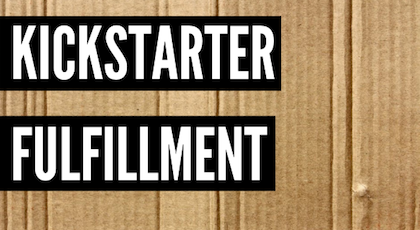After compiling a list of publications, bloggers, and influencers using tools like these, it can sometimes be difficult to figure out where you should being with your media outreach. Who are the big fish in the pond? While there are a few different software programs you can use to help out with PR during a crowdfunding campaign, I’ve found Inkybee to be one of the most helpful.
Although it’s a bit steep in terms of price for a creator ($79/month) there is a 15 day free trial option! Below, I’m going to walk through some of the functionality that you can use to enhance your blogger outreach.
Step 1: Create an account.
I used Twitter to easily sign up and got into the software in about 2 minutes.
Step 2: Browse through their blog database
#1 – You can use the search bar to discover blogs already existing in the blog database. To give you an example, I just typed “fashion” into the search bar and pressed enter. This brought me to the screen below.
On the lefthand side of the screen, you can see that you can filter the blog search by country, states, city, and language. This can be helpful for identifying bloggers in your area that you can reach out to on a more personal basis. Also, if you have a product that is geared towards a particular audience (say young professionals in NYC), then you can use these features to target your outreach.
I will be going more into the visibility and engagement metrics a bit later. For now, let’s take a look at the “advanced search” feature. I’ve included a screenshot of the functionality below.
Using Inkybee’s advanced search features, you can sort blogs based on page/domain authority, days since last post, and Moz Score. If you don’t know what these terms are, I’ve included a cheat sheet below. You can also refer to the Inkybee guide.
Visibility: Visibility is a measure of how visible a blog is on the Internet in relation to all other blogs. Visibility equates to audience, connectedness and authority metrics. For example, Mashable and Huffington Post are highly visible and therefore would have the highest visibility scores. It is measured on a logarithmic scale from 1 to 100.
Engagement: This is a calculation of the level of interaction with the blog. It is based on the average number of social media shares, likes and tweets plus the number of comments each post receives, sourced from up to 20 of the most recent posts for the blog.
Page Authority: This is SEOmoz’s calculated metric for how well a given webpage is likely to rank in Google.com’s search results.
“Page Authority is Moz’s calculated metric for how well a given webpage is likely to rank in Google.com’s search results. It is based off of the Mozscape web index and includes link counts, mozRank, mozTrust, and dozens more. It uses a machine learning model to predicatively find an algorithm that best correlates with rankings across thousands of search results that we predict against.” – Read more.
Domain Authority: This is SEOmoz’s calculated metric for how well a given domain is likely to rank in Google.com’s search results.
“Whereas Page Authority measures the predictive ranking strength of a single page, Domain Authority measures the strength of entire domains or subdomains.” – Read more.
MozRank Score: This is SEOmoz’s general, logarithmically scaled 10-point measure of global link authority (or popularity). It is very similar in purpose to Google’s PageRank.
“MozRank represents a link popularity score. It reflects the importance of any given web page on the Internet. Pages earn MozRank by the number and quality of other pages that link to them. The higher the quality of the incoming links, the higher the MozRank” – Read more.
Step 3: Create a Research Job
#2 – Next, we’ll be diving into the “research” tab on Inkybee. Below, I’ve included a screenshot of what you will see when you click the “research” tab.
With Inkybee, not only can you browse their blog database, but you can also crawl the web and discover new blogs. Above, if you click the “automatic discovery” tab, you will see the screen below.
“Inkybee’s unique blog discovery tool continually scours the web for new blogs. Set up discovery jobs for your clients’ important keywords and you will get a daily email when Inkybee finds more relevant blogs for you to add to your projects.”
You now must set the keywords that you’d like to generate a discover job for. The software tool will find blogs where the blogger used these keywords in their blog posts. For the purposes of this tutorial, I just set my keywords to the broad term “design” and “technology.”
After you create this search job, I’d recommend waiting 10-24 hours for it to produce results. You will also get an email when some blogs begin to pop up in the discovery section. This is what it will look like:
As you can see the design,technology search job is “on” and has crawled 410,592 blogs/posts. I then clicked on this list. See the breakdown below:
Notice that you can filter these blogs by SEO performance, posting activity or sort by relevancy, audience, and engagement. Inkybee will also keep adding new blogs to this list as the program finds them.
Step 4: Conduct In-Depth Research
If you click “add to list,” and then go to your “lists of blogs” under the research section, you’ll see a more in-depth view of each blog. I’ve already added a few blogs to a list to give you an idea of that it will look like. Check it out below.
As you can see, there is more in-depth information about the audience size, engagement, and social media size of each blog. The real fun begins when you click “blog details” as I’ve done for Coco’s Tea Party. You will then see the screen below:
Using this view, you can see all the social media accounts associated with this blog. There is a lot of information, so I’d just like to highlight the “blog contacts” section and the “relationship section.”
Inkybee isn’t always able to gather the contact data, but I’d say it does maybe 50% of the time, which can save a lot of workload when you are building your media list. You can also use it as a CRM to “add contacts” to the blog if it doesn’t already have one.
Under the relationships tab, you can track the actions that you’ve taken to build a relationship with the blogger prior to asking something of them. Examples include: Following them on twitter, commenting on blog posts, or retweeting them. There are a lot more like “emailed blogger” or “mentioned blogger on own website.”
If you have assigned a member of your team with the task of blogger or PR outreach, this can be helpful when determining their effectiveness and how efficiently they are allocating their time.
Step 5: Conclusion and Other Resources
Inkybee is one tool that you can use to simplify blogger and PR outreach. I’ve found it to be helpful in the past, though it is a little expensive for a starving creator/startup, but it does have a 15 day free trial and you don’t need to put in your credit card (considering most campaigns are 30 days, not bad!). Let me know if you have any other questions in a comment below.
In addition to Inkybee, I’ve also found BuzzStream to be a useful CRM tool.
For more information on what it’s like to run a crowdfunding campaign, I recommend buying my ebook or interacting on CrowdfundingForum or KickstarterForum.

















